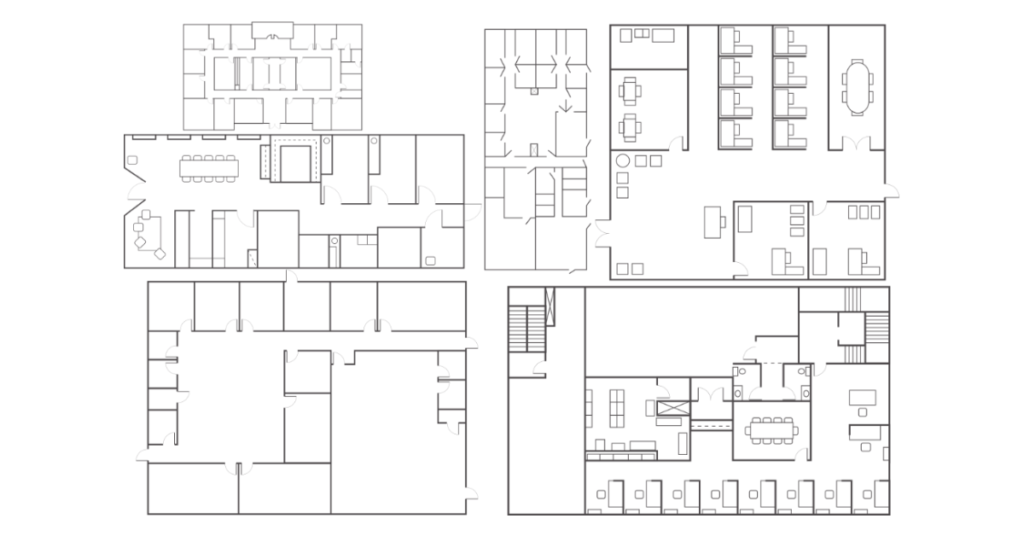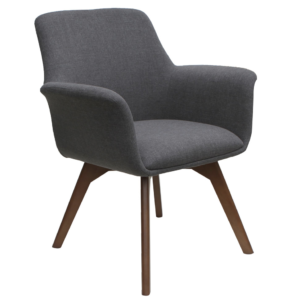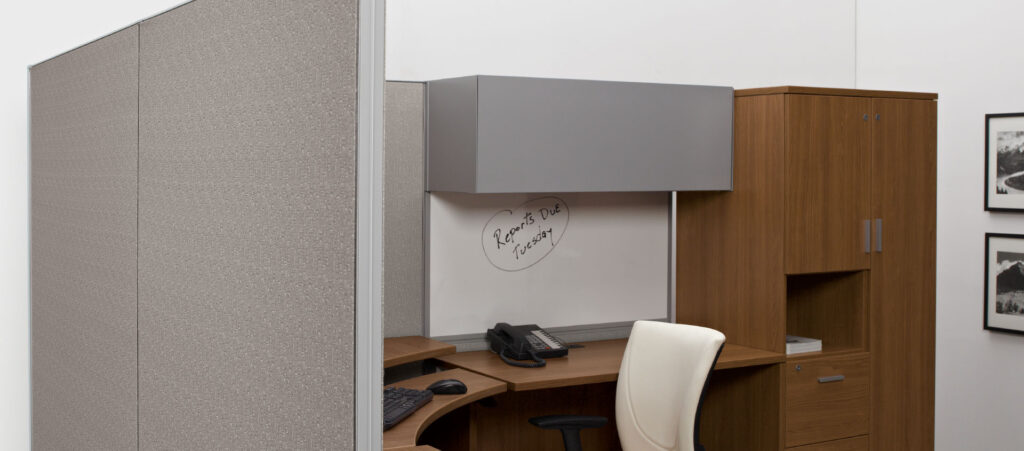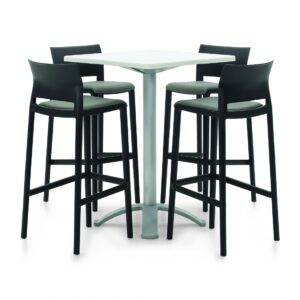Creating Work Zones in the New Office Environment
July 8, 2020
Right now, the business owners we’re talking to are scratching their heads, trying to figure out how to create workplaces where safety and collaboration can coexist.
PA businesses are slowly starting to reopen their doors, which is great news. But, inviting office staff back only to place them inside a socially distanced bubble of hand sanitizer and masked communication doesn’t exactly spur team-building or innovation.
The new office environment requires owners to do more than make it easy for employees to socially distance themselves. You need to look for ways to keep employees safe without cutting off their ability to collaborate and socialize. And, it’s going to take more than putting six feet of space between desks. It’s time to think in terms of the type of work that needs to get done and how the layout of your office can facilitate your team’s ability to do their best work.
The good news is we’ve changed office layouts before, and we can do it again.
Today’s economy feels unprecedented – and it is. But, a shifting office landscape is nothing new. Over the past few decades, office layouts have evolved alongside our changing work styles. As companies placed more importance on collaboration as a way to improve work quality and employee performance, many offices transitioned from a sea of cubicles to open-concept layouts with communal spaces.
Companies everywhere are now facing the latest change in workplace culture. Unlike welcome changes – kudos to whoever kicked off the ‘foosball table in the breakroom’ trend – we’re now facing significant change driven out of a need to keep people safe. Still, the same rules apply – allow your business’ needs to drive your office layout rather than allow the layout to dictate how you do business.
When designing your office to fit your new business needs, think in terms of ‘work zones.’
Work zones are areas of an office designed for very specific types of work. Most offices can break things down into three primary work zones based on the type of work your employees need to get done – solo, team, and communal.
Solo. An independent space to work without distraction
Team. Spaces for small teams of employees to meet, brainstorm and collaborate
Communal. Group spaces that allow for social conversation and larger group meetings
No matter how you slice and dice your office, there three main things to think through when you’re designing each work zone: social distancing, cleanability, and creating space between workspaces.
However, what may be easy in one office could be a challenge in another. If you already have a small workspace that’s set up for collaborative work with communal seating, you’re going to have a harder time implementing social distancing and space separation than a larger office with built-in, closed-door workspaces. But don’t worry, there are options out there for everyone, no matter how and where you work.
To keep things simple, let’s focus on three of the most common office layouts – open-concept, cubicle, and traditional – and how to create safe, collaborative work zones in each.
The Open-Concept Office
The open-concept workplace took the professional world by storm years ago. It was built on the idea that by literally breaking down the barriers between people, you could fuel collaboration and creativity. Whether you love them or hate them, open offices are everywhere and now, thanks to COVID, are all in need of a major overhaul.
How to Think About Your Open-Concept Office Work Zones:
Solo Zone. By definition, open offices just about did away with solo work zones. Collaborative work was prioritized over solo work and employees needing a quiet workspace resorted to popping in a pair of earbuds. Today, owners can turn a portion of their open space into safe solo work zones that prevent bacteria from spreading. This can be as simple as adding single desks and chairs with partitions. Acrylic screens placed on the front and sides of each desk are worth considering if you want to maintain an open feel where employees can still see one another. It also meets the ‘cleanable’ criteria making since acrylic is easy to disinfect.

Team Zone. Open-concept offices are synonymous with comfortable team meeting spots packed with sofas and communal tables. There are a lot of resources out there to help make these spaces safer. Swapping sofas for individual, easy-to-clean lounge chairs is a simple place to start. If the space you have to work with is really tight, you can find low-profile seating that takes up minimal floor space or reduce the number of spots available to sit. Also, look for single chairs with built-in tabletops to add function and remove the need for a table altogether. Non-permanent panels are also a great way to section off team zones to keep traffic in and out at a minimum.
Communal Zone. The big issue with communal zones is social distancing. If your office is large, communal work zones should be the easiest zones to create. If you’re working with a small amount of office space, however, one solution is to create two back-to-back team spaces separated with free-standing panels. Then, simply remove the panels to create an instant communal meeting space for your whole team. The trick is to get creative and find ways to make use of every square inch of your open-concept space.
The Cubicle Office
Despite the popularity of open-concept offices, there are still many businesses that choose to give employees privacy by way of cubicles. Even the traditional cubicle has changed over the years with offices opting to move from high-walls to low-partitioned walls. The lower walls were created to bring more natural light into each workspace. Unfortunately, they increase the odds of bacteria and viruses finding their way in as well.
How to Think About Your Cubicle Office Work Zones:
Solo Zone. Cubicle offices already have most of the solo work zone covered. The easiest fix for creating a safer cubicle is to revert back to using high walls. You can replace short panels with tall panels, or add another wall panel on top of the existing cubicle wall and problem solved. You also need to consider the material of your current cubicle walls. Most traditional cubicles have a fabric or other woven textile covering. This is not a surface that’s typically easy to clean. Before you raise each cubicle wall, consider if the cubicle itself needs an upgrade to a more cleanable option.

Team Zone. In a cubicle-style office, team meetings tend to end up in the company conference room. Turning a conference room into a safe team zone comes down to swapping multi-person furniture to single person pieces and making peace with the fact that fewer people can meet in the room at any given time. The easiest way to keep employees six feet apart and make that separation easier is by adding easy-to-disinfect chairs and desks in place of a big conference table.

Communal Zone. Just like in the conference room, lunch or breakroom communal zones should swap group tables for individual tables placed six feet apart from one another. Your lunchroom is an especially important room to consider because employees will have to remove their masks temporarily to eat. The single tables and chairs you add need to be easily disinfected daily.
The Traditional Office
The traditional, professional office is the workplace with the corner office. The good news is that this type of traditional office has natural separation built-in with closed-door offices. The challenge for these spaces is the number of people. You’ll see firms with a traditional office setting often employ large groups of people, making social distancing and space separation much more difficult.
How to Think About Your Traditional Office Work Zones:
Solo Zone. If your traditional office has built-in solo zones in the form of closed offices, you’re already a step ahead. You’ll still want to consider two things. If each office desk has two chairs sitting in front for guests, remove them if they can’t be placed six feet apart from the others. Also, check that your desks, chairs, door handles and any other surfaces are easy to clean. If you plan on having small closed-door meetings, treat these offices like team zones during that time.
Team Zone. We see a lot of professional offices that employ a large number of people often have a series of team meeting zones. These rooms usually have space for four to six people around a small table. They’re similar to the open-concept office team zones but in a closed room. You can create space by placing compact, individual lounge chairs along the wall rather than around a table in the middle of the room. Then, swap the big round table for individual tables in front of each desk or just eliminate tables altogether.

Communal Zone. Traditional offices don’t just hold staff meetings in their communal conference rooms, they also host guests and clients. If you’re unsure how to welcome guests back into your office and host meetings with clients or board members, you’re not alone and there are options. An easy, temporary fix is to simply remove every other chair from your conference room so people are further apart. Like the communal zones we talked about in other office types, you’ll ultimately need to get rid of common tables. Instead, incorporate individual chairs with built-in desktops placed six feet apart.
Post-COVID office success will come as we continue to find new ways to do the same great work
As you and your employees return to the office, know that it is possible to create solo, team, and communal work zones that allow everyone to do great work and do so safely.
Our furniture folks at Nolt’s are here and ready to help you maximize your office space so employees can continue to provide the same high level of service to your customers. Our showroom has a great selection of new and used office furniture ready to go, so come visit us today.
We can’t wait to help you and your employees get back to work!
